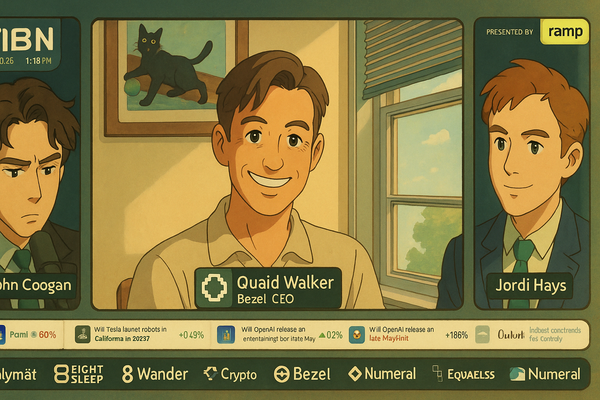Sam has crazy hair!
FTX was a story too good to check

Quick favor: Please share this newsletter with anyone you think would find it valuable. Newsletter discovery is getting better, but personal referrals remain the best path to sustainable, long-term growth, in my experience at least.

FTX was a story too good to check
It’s fitting the most revealing yet story of what happened at FTX’s from Sam Bankman-Fried’s view appeared in a Vox section he’d partially underwritten. The stunning implosion of FTX, and the role played by its mercurial founder known as SBF, is inextricably intertwined with the stories we tell.
That’s because SBF is a great story. He might be a nerd, but he was a media-savvy nerd, who knew that the best way to curry influence with journalists is to craft a narrative that skipped the gobbledygook of crypto with its protocols, sharding, yield farming and hash rates. Instead, SBF dribbled out the raw ingredients of a great story: the crazy hair, slobbish attire, polycules, and a heroic quest to save the world in the form of effective altruism. This Nas Daily video is the purest distillation of the narrative: “Sam has crazy hair!” we’re excitedly told. As the old journalism saying goes, it was “too good to check.”
Every story needs protagonists. SBF fit the role, especially when compared to a prickly character like Coinbase’s Brian Armstrong, who believes journalists are biased gatekeepers. SBF knew being nice to the writer rarely ends up in looking worse in the story. Anytime a former business superstar collapses, you are almost assured there was a breathless Forbes and Fortune cover. The effective altruism angle was a PR hook from heaven. SBF admits as much in his DMs with Vox. It didn’t hurt that FTX splashed around plenty of money buying ads.
The reasons stories are so powerful is they linger. Even this week, the New York Times published a doozy of a sympathetic piece on SBF’s collapsed empire that treated what could very well end up to be a massive financial fraud as a fall from grace. It’s been rightly and widely criticized as missing the mark, while also providing more fodder for the narrative tech critics have constructed of The New York Times. One even went so far as to create a site to “expose” The New York Times and allow the aggrieved to mass block Times’ journalists on Twitter. (I sometimes feel like we’re not living in the future but in kindergarten.)
The libertarian tech story has it that an East Coast “elite” cabal of journalists, finance, government types, the World Economic Forum, maybe Zelensky and some others are joining forces to keep down free people. Balaji Srinivasan is one of the leading authors of this narrative. I’ve gone so far as to have listened to a seven-hour podcast he did. He believes the NYT is run by “some of the most evil people on earth,” and the FTX collapse is part of a larger conspiracy. This is Q-Anon for terminally online rich guys living in tax havens. It also carefully avoids the reality that much of crypto is driven by its own narrative that all money is a made-up anyway.
Part of the issue is, even in a world awash in data, we are still captive to stories. The blockchain won’t change that. Putting together a story means choosing some facts and some quotes and disregarding others. Editors tend to see nuance as being mealy mouthed. Complex and ambiguous situations become black and white. “Heroes and villains,” as my former boss Michael Wolff once told me. Then again, it’s not like Sequoia did a better job with its hagiography. The best and brightest investors, stewards of tens of billions of dollars, spent more time on the FTX story than noticing FTX’s “complete absence of trustworthy financial information.” As SBF would advise, the world is never so black or white.
Even more awkward is the ties SBF had with media through charitable giving. Vox received a grant from an SBF family foundation for a project it says is now “on pause.” ProPublica in February announced a $5 million grant from the same foundation, spread over three years, to cover biosecurity and pandemic preparedness. ProPublica is skipping the final two installments, leaving it in the awkward position of potentially taking quite a bit of money that was stolen. SBF apparently wanted to hire popular writers like Nate Silver and Matt Yglesias to start a Substack-like company. They wisely all declined.
Perceptions matter when your brand is tied to sketchy characters. Semafor counts SBF as an investor and needs to find a place for this disclosure in every story it writes about FTX. (It’s done a nice job in coverage and hasn’t pulled any punches, in my view.) The company has said it is “monitoring” the situation, but it’s hard to see how it can continue to count SBF as an investor if this story keeps getting worse, which it almost assuredly will.
As SBF said in Vox, “Everyone goes around thinking perception reflects reality.”

Recommendations
Winter is coming. Vice is cutting 15% of costs. Outside is paring back 12% of staff after having just laid off 15% in May. Protocol is shutting altogether, never having established a foothold in the crowded tech news market. Warner Bros. Discovery chief David Zaslav sees a weaker ad market than during Covid. Over at SellerCrowd, 58% of ad sellers said they’re seeing 2023 budgets being cut. The warning signs for the economy are clear at this point.
New magazine models are emerging. Condé Nast’s pivot to bet on turning its intellectual property into programming will be put to the test in a new age of austerity as the streaming wars wind down in favor of the boring business of expanding margins.
Morning Brew has a star in Dan Toomey. His videos are regularly funny and informing, even with complicated issues. He has a funny explanation of what went down at FTX.
ICYMI: Check out the podcast I did with Ari Paparo. We spend a bit of time on Twitter, but we cover some good ad tech topics in a way that I hope isn’t too far down that particular rabbithole. It’s on Apple Podcasts or Spotify.
“Master of Cheese” is a documentary of one of the world’s best cheesemakers – “Jiro Dreams of Sushi” in Switzerland – and how he poured himself into his craft to the point he can “listen to the milk,” according to a segment at the end of the Monocle on Sunday podcast.

Resources
If you’re building a newsletter, Beehiiv is putting together a weeklong course focused on growing and making money from newsletters. The course runs Dec. 4-8. There’s a great lineup of speakers, including Workweek’s Adam Ryan, Morning Brew’s Alex Lieberman and Puck’s Max Tcheyan. (I’m also giving a talk.) Check it out and apply to join.
Artificial intelligence is coming to everything. Notion is baking AI into its note-taking app to “edit, brainstorm, summarize and more.”
See how your email performance stacks up with the Omeda Email Engagement Report. Download it here. (Sponsored)

Shoot me a note with any feedback: bmorrissey@gmail.com.
For sponsorship information, check out The Rebooting’s sales kit.




